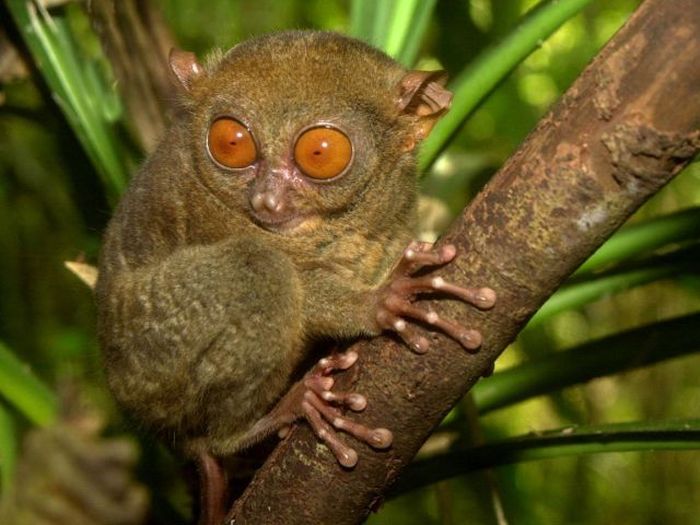|
|
Philippine Tarsier
|
• Classification
The phylogenetic position of extant tarsiers within the order Primates has been debated for much of the past century, and tarsiers have alternately been classified with strepsirrhine primates in the suborder Prosimii, or as the sister group to the simians (=Anthropoidea) in the infraorder Haplorrhini. Analysis of SINE insertions, a type of macromutation to the DNA, is argued to offer very persuasive evidence for the monophyly of Haplorrhini, where other lines of evidence, such as DNA sequence data, remain ambiguous. Thus, some systematists argue the debate is conclusively settled in favor of a monophyletic Haplorrhini. In common with simians, tarsiers have a mutation in the L-gulonolactone oxidase (GULO) gene which confers need for vitamin C in the diet. Since the strepsirrhines do not have this mutation and have retained the ability to make vitamin C, the genetic trait which confers the need for it in the diet would tend to place tarsiers with haplorrhines.
At a lower phylogenetic level, the tarsiers have, until recently, all been placed in the genus Tarsius, while it was debated whether the species should be placed in two (a Sulawesi and a Philippine-western group) or three separate genera (Sulawesi, Philippine and western groups). Species level taxonomy is complex, with morphology often being of limited use compared to vocalizations. Further confusion existed over the validity of certain names. Among others, the widely used T. dianae has been shown to be a junior synonym of T. dentatus, and comparably, T. spectrum is now considered a junior synonym of T. tarsier.
In 2010, Colin Groves and Myron Shekelle suggested splitting the genus Tarsius into three genera, the Philippine tarsiers (genus Carlito), the western tarsiers (genus Cephalopachus), and the eastern tarsiers (genus Tarsius). This was based on differences in dentition, eye size, limb and hand length, tail tufts, tail sitting pads, the number of mammae, chromosome count, socioecology, vocalizations, and distribution. The senior taxon of the species, T. tarsier was restricted to the population of a Selayar island, which then required the resurrection of the defunct taxon T. fuscus. Their classification, which includes several newly described species, is as follows:
|
|









